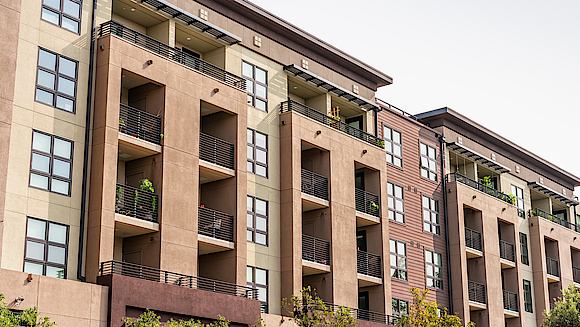
U.S. Multifamily Investment Opportunity Post-COVID
author
Bruno Berretta

Blogbeitrag
U.S. Multifamily Investment Opportunity Post-COVID
U.S. multifamily has been among the most highly sought-after sectors by institutional real estate investors over the past several years, in large part due to its high historic risk-adjusted total returns, necessity-based nature, strong demographic tailwinds, and attractive financing opportunities. It has become an integral part of commercial real estate (CRE) investment portfolios with a portfolio weighting of 29.2% in the open-end diversified core equity index (ODCE).
After a brief downturn during the COVID-19 recession in 2020, multifamily fundamentals have fully rebounded and remain very healthy. Overall, U.S. multifamily rents are at all-time highs, and most markets report a near historically-low vacancy rate under 5.0%. Going forward, Clarion Partners is optimistic about the outlook for U.S. multifamily in 2023 and beyond due to five main factors:
- Robust Ongoing Job Growth Sustaining Housing Demand. U.S. employment is now well-above pre-COVID levels, and forecasts indicate there will be 2.5 million new jobs created from 2023 to 2025.1
- Strong Wage Growth. Recent U.S. wage growth has accelerated above the long-term average, adjusting along with broader inflationary pressures. With low unemployment and high job availability, incomes have risen, resulting in a stronger renter financial profile overall.
- U.S. For-Sale Housing Affordability at An All-Time Low Supports Rental Housing. The median U.S. home price recently reached a record level. Even as residential mortgage rates remain near the highest point since 2002, home prices are still around all-time highs across many U.S. markets and financing costs to purchase have more than doubled in the last year.2
- High Construction & Replacement Costs. Over recent years, there was an unprecedented surge in U.S. construction and replacement costs. In addition, the cost of construction financing remains high, making new projects more expensive. Although we expect ongoing improvement, overall project costs are likely to remain elevated and lead to a moderation in the supply pipeline.
- National Housing Shortage. Following a decade of underbuilding, there continues to be a national housing shortage. Institutional-quality multifamily is in short supply across a wide range of U.S. metros. At the same time, the for-sale housing inventory has remained near a two-decade low nationwide.
In recent years, demand for all forms of housing has remained steady. All major markets reported positive rent growth in 2022, and, U.S. annual rent growth reached 6.7% in Q4 2022, following four straight quarters of double-digit increases.3 The future outlook for rent growth is positive, however, rent control may be a concern in a few states.
With the increase in the costs of for-sale housing and financing, housing affordability is likely to remain a significant headwind for the 154 million Millennials and members of Gen Z to enter the single-family purchase market. The pent up demand from millions of young adults either living at home or starting new households elsewhere, will instead need to focus on all types of rental product including multifamily apartments. This will be a key driver of rental demand in the years ahead.
Trends that accelerated during the pandemic to endure in the coming years. Sun Belt states, low-cost metros, most tech hubs, suburban submarkets, and garden-style formats outperformed. Work-from-home (WFH) is likely to continue to influence net migration patterns, which may benefit some metros more than others. At the same time, coastal CBDs have largely recovered, and most young professionals have returned to the office. Nevertheless, faster population and job growth in low-tax and business-friendly states in the South and West regions in the U.S.
Looking ahead with the ongoing U.S. housing shortage and obsolescence of existing stock, multifamily build-to-core investments are likely to offer attractive returns, especially in more high-growth areas. There is cautious optimism about the long-term outlook for CRE income and appreciation even though a moderate CRE correction is now underway. As the CRE market adjusts to higher interest rates, the multifamily lending environment has remained highly competitive, and Government Sponsored Enterprise (GSE) financing terms remain favorable.
Last but not least, multifamily has historically tended to have superior investment performance after recessions because landlords can adjust rent more quickly than in other sectors. Therefore, multifamily investments can potentially serve as a hedge against rising inflation, a desirable characteristic in today’s reflationary environment. Of course, whether or not multifamily is an effective inflation hedge, risks remain when investing in real estate. In the years ahead, we believe that the outlook for U.S. economic growth is positive, and multifamily fundamentals are likely to remain stable.
weitere Informationen
Werden Sie FondsNews-Leser!
Fachartikel, Informationen und Nachrichten der institutionellen Immobilienwirtschaft.
1 Moody’s Analytics. February 2023.
2 Ibid.
3 CBRE-Econometric Advisors. Q4 2022.



